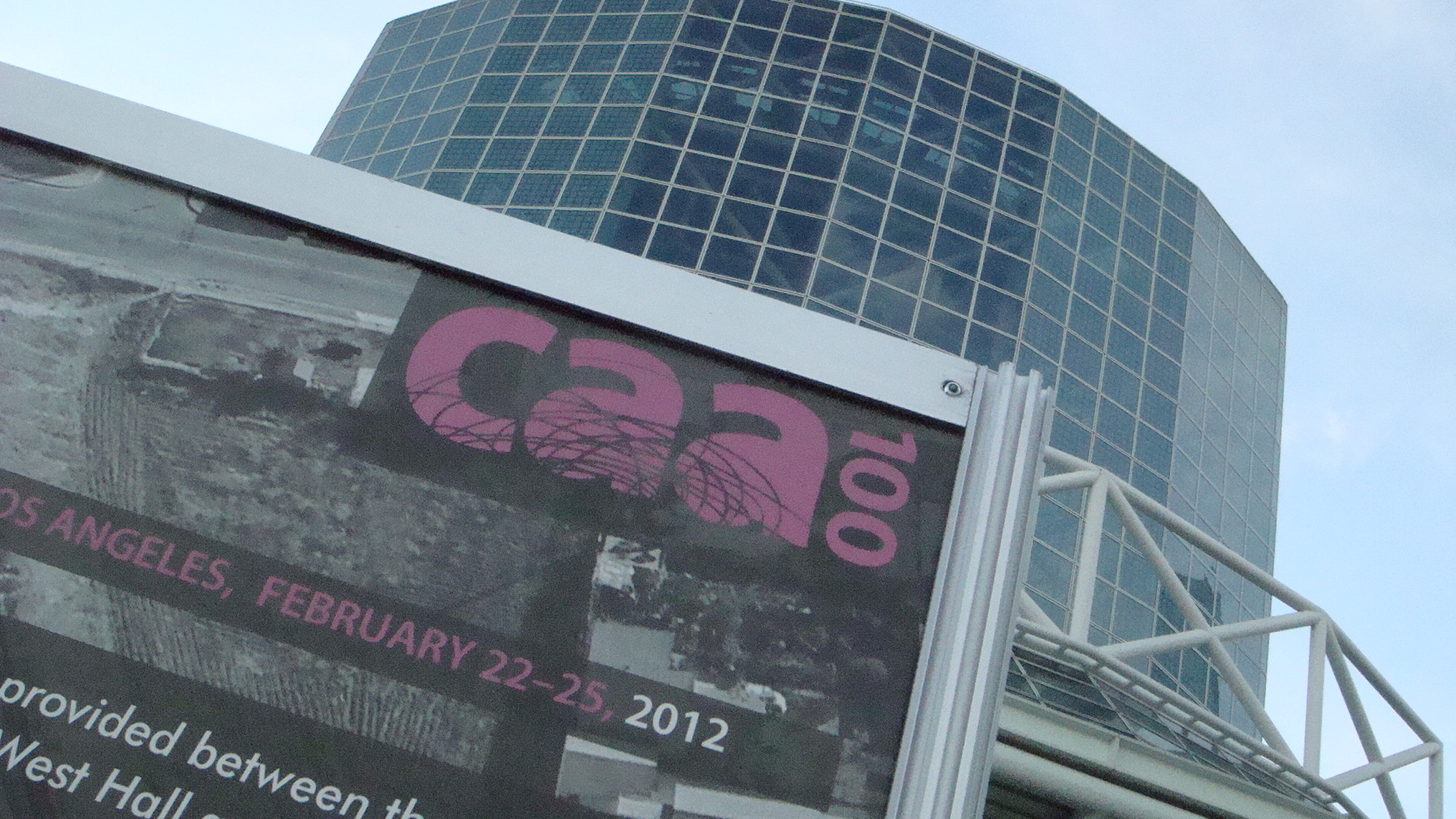
LOS ANGELES, February 22 — At the end of the 1984 adaptation of The Razor’s Edge, on departing from Elliott Templeton’s Parisian palace, Larry tells Joseph the butler that he’s going home. Joseph asks him where that is, and Larry replies “America.”
I’ve lived in The Hague for ten years now. I came as a choreographer for the Bush Administration, and have, more recently, taught art at Erasmus University. I love it here and I still love the proximity to Delft. In spite of all the far-flung homes my mother dragged Jeff and I to as a diplomat for the Reagan Administration, and despite the sanctimonious self-righteousness I enjoy as an expat, I am, ultimately, an American.
And my mother is getting on in years.
And my daughter doesn’t live with me anymore anyway.
And so, in spite of it being such a remarkably crappy economy to try to find a teaching gig in, I thought I’d schlep out to California for the annual College Art Association’s pontification-palooza and faculty feeding frenzy, just to take a peek.
Between the careers of my mother and my ex-husband, even at the advanced age of 42, I haven’t often had to actually pay for my own plane ticket. A ride from Rotterdam to Los Angeles is shockingly expensive. You can cut it in half it you catch the Frya up to Amsterdam first, and you can cut it in half yet again if you instead take the overnight ferry to London first.
All of which is just my way of saying that, as far as I am aware, I am currently the most jet-lagged person on the North American continent. In his book Pattern Recognition, William Gibson describes jet lag as your body arriving at a distant location before your soul has time to catch up. I do hope mine gets here soon.
Despite my quasi-catatonic stupor, I did manage to attend a bit of the conference today. In the spirit of what has become the ”DJ 2012” or Polymorphic project, I attended a wonderful panel on Contemporary Collaboratives and Collectives.
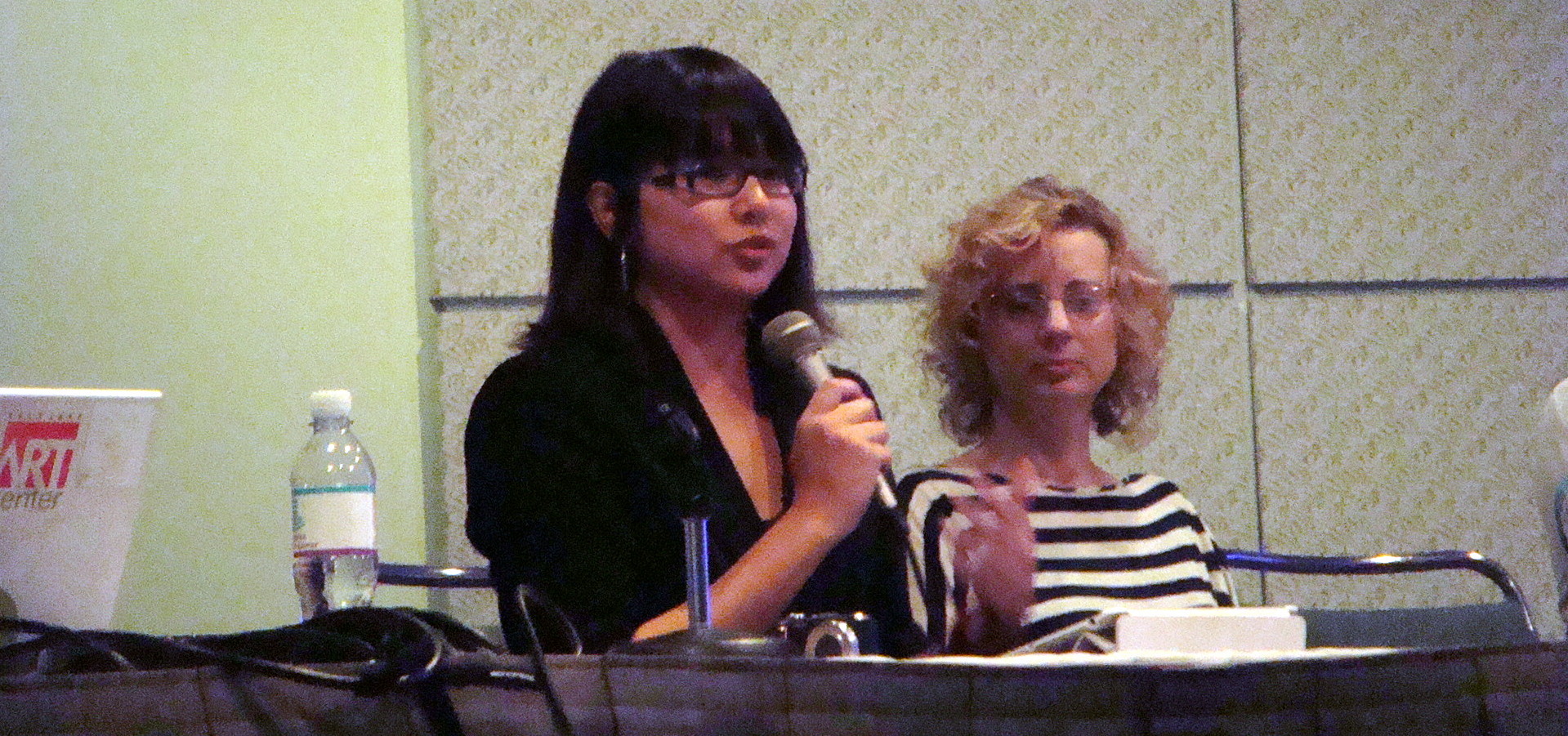
ARTspace
Contemporary Collaboratives & Collectives
CHAIRS:
• Sharon L. Butler and
• Micol Hebron
Trolling the web I was pleased to find Hebron’s 2009 work Bubble Gum Pop, as I have been such a fan of Belinda Blignaut’s 2010 bubble gum installation Stealing the Words at Young Blackman Gallery / Cape Town.
On the panel in Los Angeles were
• An Xiao
• Stephanie Allespach of LA Art Girls
• Lucy HG of The League of Imaginary Scientists
• Ed Giardina of Finishing School
And intermittently skyped in were
• Nicole Cohen of Berlin Collective
• Abbey Dubin of Our Literal Speed
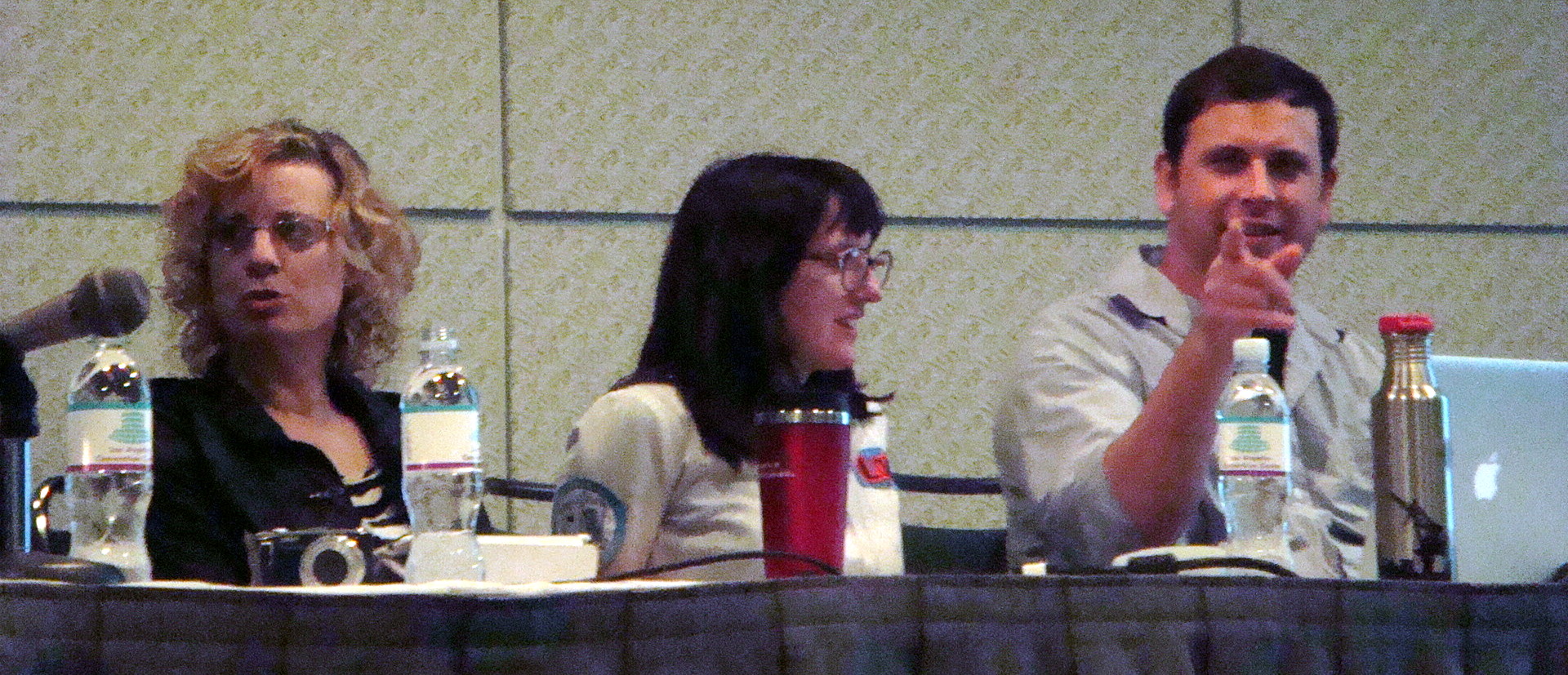
While the virtual performance works I’ve created in the past 3 years have not, except for DJ 2012, been “collective projects” they have evolved from my tightly choreographing an opus, to my setting a scenario in which participants can, to a greater or lesser degree, choose the manner of their participation.
Also during this period, my zeal of the convert for the Church of Free Culture has not wavered.
The collective panel seemed very much to sit at the nexus of participatory works and free culture. While there was some variation and while some of the speakers also maintain a more traditional, individual-artist gallery practice, the panel seemed to largely reject both authorship and object-based art production. Hebron noted that all of the panelists and their collectives had received a lot of “attention on the part of institutions, but not on the part of galleries.”
Xiao: We’re not that interested in authorship.
Giardina: We don’t want to be a part of the gallery system.
HG: The motive for the collective is just to do the work. They exist outside of a market.
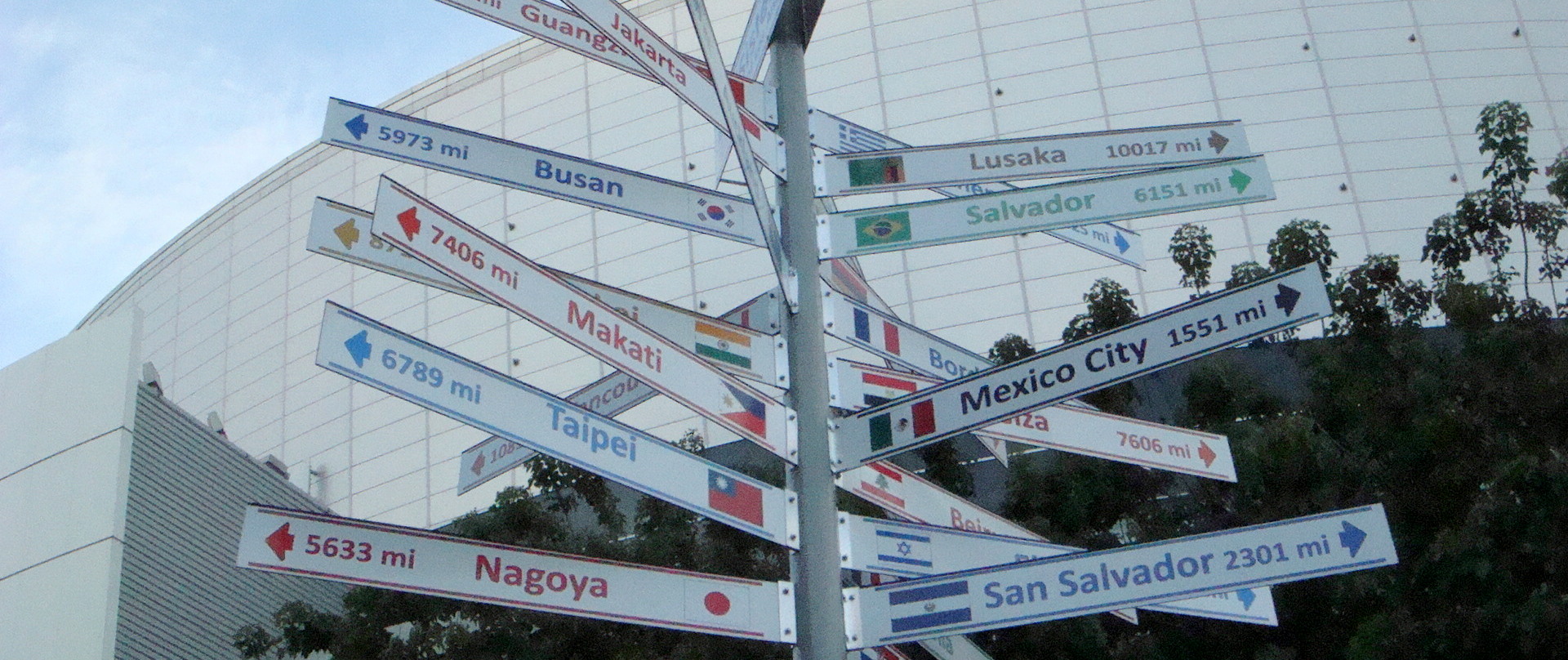
The general sense was that at least for the cultural institution, and perhaps eventually for galleries as well, that here in the 21st century, the “art” is the collective’s potential to create an interactive experience, rather than a consumable or collectible commodity. While this is exciting, it was also noted that museums often engaged collectives with their lesser “education / outreach” budgets and not, as yet, their larger resources for “blue chip” artists.
There was also the concern that the collective might be reduced to “entertainment” presented in-between the “serious” artists and scholars in an institution’s programing. Still, there was a sense that as cultural institutions move more fully into the 21st century and perhaps embrace a wider, more inclusive public, that the artist as signature might give way to more of a focus on participatory experience.
In my own work, the 32 virtual performances in these past 3 years have all been scripted or had prompts by me, yet they have moved to more participatory, more individualistic, more open prompts over time. I have felt the energy of the “empowered” participants. In a crowd-sourced, blog, Twitter, and status-updated age, not many really want to be “the third Minoan on the right,” even if it is a remarkable choreographic work by Martha Graham.
I have always loved the Stage Designer Robin Wagner who, as a child, gave what he called “Ideal Performances,” which consisted of his opening the curtains on his meticulously designed miniature stage, and then without the messiness of any actors, allowed his audience of friends to marvel at his design, and then closed the curtains.
I love design.
I love that level of intentionality and specificity.
But I also love the global brain of possibilities that spring forth when you engage your “audience” as co “participants.” Our most recent performance, Demo Days, very much embraced this, and the new project DJ 2012 is my first participation in a fully, if virtually, collective project.
This panel was an invigorating breath of jet-lagged-yet-fresh air and a vision of moving beyond the dead-end rhetoric of the copyright cartel, consumer culture, and commodity art.
In recent days I’ve grown fond of saying, If it’s “intellectual,” it isn’t “property,” and perhaps Collaboratives and Collectives represent one of the best ways to realize this art and culture sensibility for the 21st century.
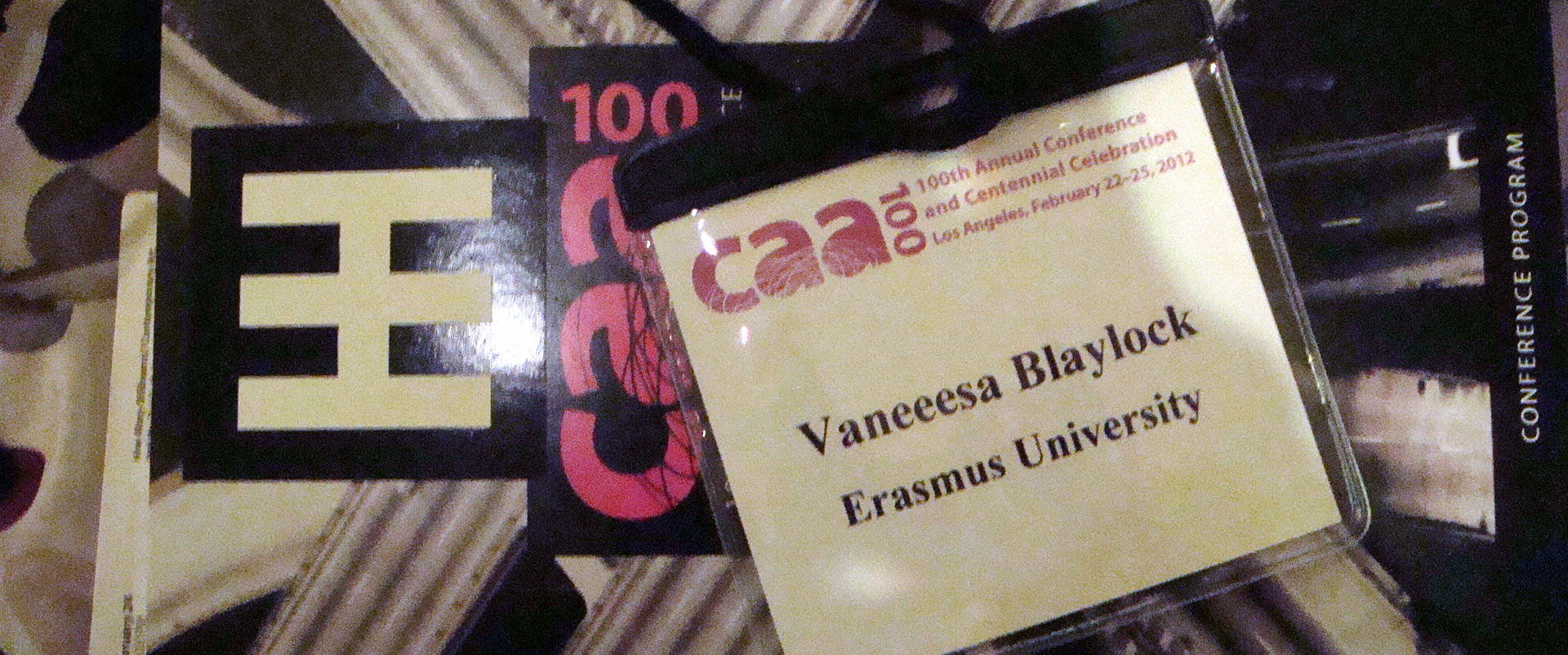

2 thoughts on “College Art Association”